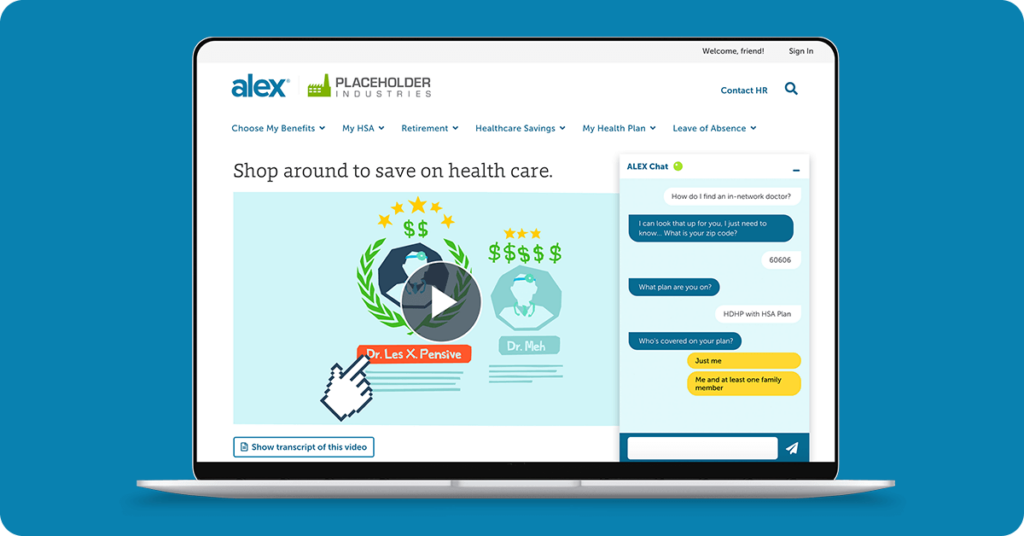There’s never been a more chaotic job market than in recent memory. If you’re flying by the seat of your pants, hiring like crazy, and negotiating with prospective new hires like never before, you’re not alone. The Great Resignation is forcing companies large and small to reevaluate how they attract and retain talent, and come up with creative ways to keep their teams fully staffed.
Of course, it makes sense that we’ve all been focused on backfilling roles as quickly as possible. But the mass hysteria around the Great Resignation began over six months ago, and for too long we’ve been focused on the negative: the workers we’re losing.
Now, it’s time that we set our sights on the next big hiring trend we’ll face: The Great Onboarding.
The great news about all of this recent turnover is that you’re about to welcome a whole new slew of talent, which means a huge opportunity to make a good first impression that will keep employees at your company for years to come.
As a major part of that effort, employers are reviewing their benefits packages to see where they might be falling short. Especially after a challenging couple of years, they know that employees need more support, and they’re investing more than ever in resources to keep their staff happy, healthy, and engaged.
But there’s just one problem: employees aren’t getting the memo. According to a recent study:
So as we turn our sights to 2022 hiring, we need to be thinking about employee onboarding, too.
Why? It’s our first opportunity to introduce employees to their benefits package, and ensure they fully understand and choose the plans that work best for them. In other words, it’s a chance to cut employees off at the pass, prevent the many benefits engagement problems we’re facing, and prime employees for a strong benefits journey throughout their time at your company.
Because as it turns out, we still have a lot of work to do when it comes to communicating benefits during onboarding — and our new hires are less than impressed. Let’s jump in.
Section 01
A quick look at the state of onboarding today
We’re starting off with the basics. How are we doing with our onboarding processes in general? First, some good news:
Well done, HR teams! When it comes to onboarding overall, your employees are happy. You’re setting them up with the people, information, and resources they need to start strong at your company.
Now for some tougher news: while most organizations are generally doing a good job, some don’t have an onboarding program in place at all:
It goes without saying that this stat is a huge problem. Onboarding has a huge impact on your organization’s ability to retain talent: in fact, Glassdoor estimates that a strong onboarding program can improve retention by 82%. And considering the turbulent job market we’re in, the companies that can retain talent are the companies that will win.
So first things first: if you don’t have a formal onboarding program in place, now’s the time to create one. Not sure where to start? Download our Ultimate Virtual Onboarding Checklist for step-by-step instructions.
Build your employee onboarding program now.
Section 02
How important are employee benefits during onboarding, really?
Employee benefits are probably one of the first things that come to mind when we think about a traditional onboarding process: lots of paperwork, health plan brochures, and group presentations about all of your offerings.
But there’s a whole lot more that happens during employee onboarding, from meeting new coworkers to performance management to company culture introductions. So where do employee benefits fall on the priority list for you and your employees?
Employees say: benefits affect whether or not they’ll accept a job
HR folks, that means you need to be selling the value of your benefits package before employees walk in the door — during the recruitment process, and when you’re extending offers. And unfortunately, that’s not always happening:
So if you’re struggling to find new talent for your company, this is one area you may want to focus on.
- Add employee benefits information to your careers page and job descriptions.
- Mention your benefits package when you reach out to new candidates on LinkedIn.
- Remind candidates during interviews about the resources that will be available to them at your company.
- And make sure you’re answering employees’ benefits questions before they decide whether or not to accept your job offer.
Employees say: benefits are important during the onboarding process
No surprise here: employees say benefits are an important part of the onboarding process, too.
As employees join your company and look towards the future, it makes sense that your benefits package would be top of mind.
Employees need reassurance that you’ll support them amidst all of the physical, mental and financial health challenges they’ve faced in the past two years—and they’re expecting to learn about all of the resources available to them as they start their new job.
So how are we doing when it comes to communicating employee benefits during the onboarding process? Let’s find out.
Section 03
Where we’re falling short during onboarding
Despite how important your benefits package is to employees during hiring and onboarding, it turns out that we still have some work to do when it comes to how we communicate those benefits. Unfortunately, employees told us that their understanding during onboarding is low:
That’s a hard pill to swallow, but it’s not surprising: we know benefits confusion is a huge problem, and there are several reasons why benefits understanding is so low during onboarding specifically:
We’re not giving employees enough information
Simply put, we’re not doing enough to educate employees about their benefits during onboarding. As we saw earlier,In other words, we’re not giving employees enough time to internalize their benefits before it’s time for them to enroll.
What was missing from your most recent onboarding experience?
If employees don’t have time to study up before their first day, that means they’re going in blind to their first benefits meeting and won’t come prepared with questions. So make sure you’re sending benefits materials to employees along with the rest of your job offer paperwork so that they can digest before they open their laptop for the first time.
Our communication methods are outdated
When it comes to how we’re communicating benefits with our employees, we’re not doing ourselves any favors, either. For the most part, we’re sticking to the old standards:
During onboarding at your current company, what tools were used to communicate your employee benefits package to you?
HR teams still favor benefits guides and live presentations by far, and only 1 in 5 employees said benefits engagement platforms or interactive tools were available to them.
What was missing from your most recent onboarding experience?
The hard truth: our benefits communication methods don’t meet the needs of our modern workforce. Why? Because as we emerge from a global pandemic, our workplaces look completely different than they used to. Many of us will never go back to the office, and others never worked in an office in the first place.
Remote onboarding IS the future, and it’s what employees expect. They want flexible work, benefits that fit their personal needs, and access to the right information at the right time. So they’re not going to waste time looking through a 50-page benefits guide or take notes during an hour-long presentation. We have to make benefits guidance more accessible in the moments when employees actually need it—whether it’s during enrollment or when they’re looking for a new doctor.
Here are six steps to create a world-class remote onboarding experience.
We’re not personalizing the experience
We know many employers are resorting to group presentations to communicate benefits during onboarding. Not only is that an outdated method of communication, but it’s not what employees want:
If you could choose how your employee benefits were communicated to you during onboarding, which of the following would you most prefer?
A majority of employees want one-on-one support to help them understand which benefits are right for them. After all, what’s right for a young, healthy, unmarried employee isn’t what’s right for a 50-year-old employee with three kids—and sorting through complicated healthcare acronyms and jargon is enough to confuse anyone.
Unfortunately, employees told us that a personal touch was missing during onboarding.
What was missing from your most recent onboarding experience?
We’re asking employees to be benefits experts
To sum up, our current onboarding practices assume employees are benefits experts, who can quickly soak up benefits information with limited resources.
It’s easy for those of us in HR to forget that we’re the benefits experts, and that our employees are novices. We can’t (and shouldn’t) expect them to fully understand a robust set of benefits and perks after one quick orientation meeting.
What was missing from your most recent onboarding experience?
So it’s on us to break down complicated benefits topics in an easily understandable, human way — and show employees why it matters to them personally.
Section 04
Your job’s not over when onboarding ends
Yes, we still have a lot of work to do when it comes to communicating benefits when employees enroll at onboarding. But we’re also leaving employees high and dry after onboarding is over:
That’s right: over half of your employees don’t understand their benefits even after they’ve become full-fledged members of your team. And that’s largely because we’re simply not communicating with employees enough throughout the year:
After you completed onboarding at your current company, how often do you receive education or information about your benefits?
It’s hard to believe, but 54% (over half) of employees told us they’re only hearing from their employer once a year about their benefits. Once a year!
That means employers are missing out on countless opportunities to drive their employees towards smarter benefits decisions—that could save thousands (if not millions) of dollars for everyone involved. Just think about all of the different moments when employees interact with their benefits throughout the year:
- When they’re choosing a new doctor
- When they take an unexpected trip to the emergency room
- When they pick up a new prescription
- When they’re looking for mental health services
- When they have a surgery
And on…and on…and on. Each of those benefits interactions also present potential opportunities for mistakes and missteps: like choosing an out-of-network doctor that’s too expensive, or paying out-of-pocket for a trip to the emergency room when it could’ve been covered with HSA dollars.
Those benefits mistakes are costly for employees, but they’re also costly for you: as we mentioned earlier, C-suite leaders say 53% of their healthcare spending is wasted every year due to benefits confusion. So how do we fix those mistakes, and make sure we’re educating employees on their benefits even after onboarding is over?
Section 05
The solution: better benefits engagement (at onboarding and year-round)
As we’ve discovered throughout this report, the way we currently educate employees about their benefits during onboarding looks something like this:
- Send a benefits guide to employees on their first day
- Schedule a group presentation to give a high-level benefits package overview
- Tell employees to enroll in their preferred benefits
- Call it a day
But as we’ve seen, that’s not enough. It’s time to flip the script: from benefits communication (once a year during onboarding and enrollment) to benefits engagement—that meets employees where they are, on their time. That means helping employees make smarter decisions in the moments that matter, more frequently throughout the year—whether they’re managing a chronic condition, accessing telemedicine or looking for a therapist for the first time.
Engaging your employees around their benefits after onboarding is over means they’ll understand and use their benefits at critical moments throughout their journey at your company. That’s the difference between maximizing your benefits investment and throwing money down the drain. Equally as important, an employee who feels supported is an employee who’s going to stick around longer. And after a year when more than half of employees said they would search for new jobs, it’s imperative we take every action to retain talent.
A tool to help you achieve your benefits engagement goals
Healthcare is confusing. Benefits education is hard. You want to support your people through the often frustrating process of picking their benefits during onboarding. But providing personalized support to every employee is impossible. We get it.
A benefits engagement platform like ALEX is a trusted advisor for you and your employees. It’s a confidential resource for employees to share sensitive health information, access guidance on which benefits are right for them, and learn helpful tips for saving on healthcare costs.
ALEX’s behavioral science-based design takes a human, conversational approach with just enough humor to make your employees feel like they’re chatting with a friend while navigating complex benefits decisions.
Drive smarter benefits choices at open enrollment.

The platform meets your employees wherever they are—whether they’re at their desk or on the go via mobile, in English or in Spanish. ALEX helps your employees choose their health plans and voluntary benefits at onboarding and throughout the year, whether they’re dealing with a recent diagnosis, managing their diabetes with Livongo, or accessing mental healthcare.
Here’s the bottom line: you’re spending a huge amount on your benefits package to attract and retain the best talent. To get the most bang for your benefits buck, your employees need to learn about the value of those benefits at onboarding, then actually use them throughout the year. That’s where ALEX comes in and helps you make that happen.
Methodology
This survey was conducted in September 2021 by SurveyMonkey on behalf of Jellyvision. It surveyed 300 U.S. adults (ages 18+) who are employed full-time and currently receive their medical insurance through their employer.


